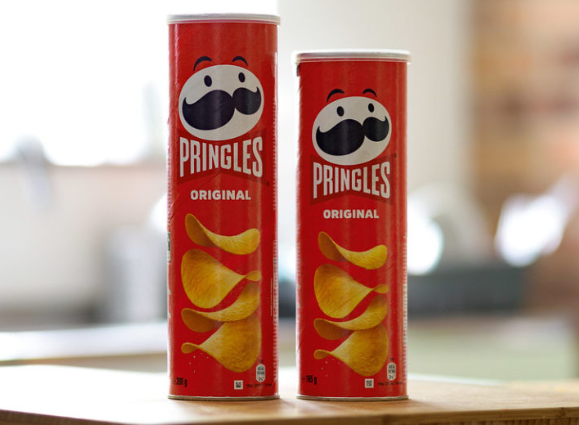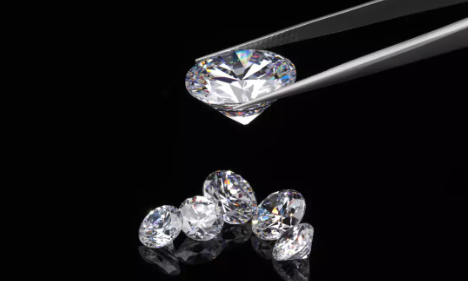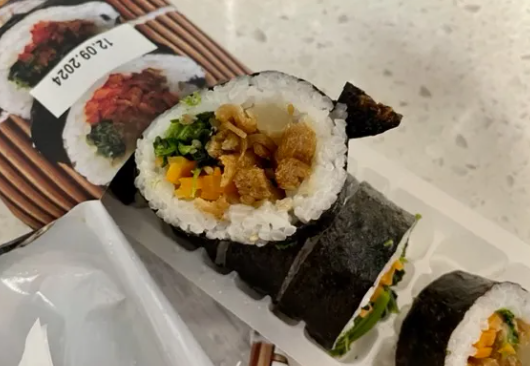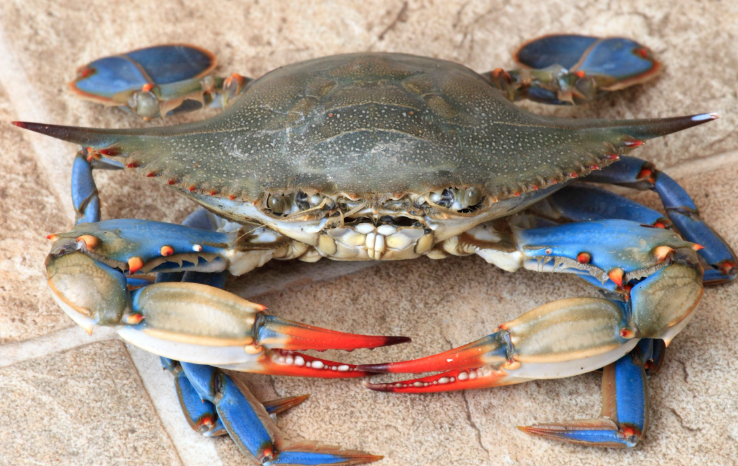Tanghulu is a popular street food snack in China. It consists of sweet-tart fresh fruits candy coated with a hardened sugar syrup. Once you try it, you’ll want to devour it again and again. It’s different from the sugar coated traditional candied fruit you may be used to.
탕후루는 중국에서 인기 있는 길거리 음식입니다. 굳어진 설탕 시럽으로 코팅한 달콤하고 신맛이 나는 신선한 과일 사탕으로 되어 있습니다. 한번 먹어보면 계속해서 먹고 싶어질 겁니다. 설탕으로 코팅된 전통적인 설탕에 절인 과일과는 다릅니다.
My favorite is Strawberry Tanghulu, made with fresh strawberries, but you can make it with any fruit you like. Choose ripe fruit that is not too soft. Fresh fruit like berries (strawberries, blueberries, or blackberries) are perfect. I also love to use kiwi slices, tangerine segments, or melon balls.
제가 가장 좋아하는 탕후루는 생딸기로 만든 탕후루인데, 여러분이 좋아하는 어떤 과일로도 만들 수 있습니다. 너무 부드럽지 않은 잘 익은 과일을 선택하세요. 베리(딸기, 블루베리, 블랙베리)와 같은 신선한 과일이 완벽합니다. 나는 키위 조각, 귤 조각, 멜론 볼을 사용하는 것을 좋아합니다.
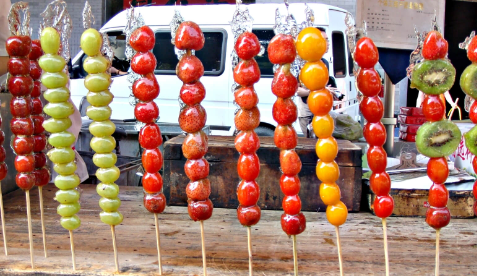
Tanghulu is a Chinese snack that is traditionally made from dried hawthorn fruit.
The crackly, sugary shell coats the bright, fresh fruit. It's fun and entertaining to bite into and a refreshingly sweet snack.
탕후루(Tanghulu)는 전통적으로 말린 산사나무 열매로 만든 중국 간식입니다.
바삭바삭하고 달콤한 껍질이 밝고 신선한 과일을 코팅합니다. 한 입 베어 물면 재미있고 상큼하고 달콤한 간식이 됩니다.
ASMR videos of people joyfully crunching into tanghulu, made from all kinds of enticing fresh fruit, were garnering millions of views the world over. Tanghulu even appeared in viral TikTok content.
온갖 먹고싶은 신선한 과일로 만든 탕후루를 즐겁게 씹어먹는 사람들의 ASMR 동영상은 전 세계적으로 수백만 건의 조회수를 기록했습니다. Tanghulu는 바이럴 TikTok 콘텐츠에도 등장했습니다.
Vendors will coat the candied fruit with a layer of hardened sugar syrup. This is what makes it bright and glossy. Conveniently served skewered on a stick, making it a popular hit in Asian street markets. Couples on a date, children or teenagers looking for a treat, will enjoy this fruit snack.
판매자는 설탕에 절인 과일을 굳힌 설탕 시럽으로 코팅합니다. 이것이 밝고 윤기있게 만드는 것입니다. 꼬치에 꽂아 간편하게 먹을 수 있어 아시아 길거리 시장에서 큰 인기를 끌고 있습니다. 데이트 중인 커플, 간식을 찾는 어린이나 청소년이 이 과일 스낵을 즐깁니다.
Historical records show that Tanghulu hails from Northern China. It supposedly made its appearance during the Song dynasty, under Emperor Guangzong's reign. Many stories speak of its origin. One legend has it that a beloved concubine was too ill to eat anything until a physician suggested dipping dried fruit in caramel. Another story is that the physician's wife invented it because of her poor appetite.
역사적 기록에 따르면 Tanghulu는 중국 북부 출신입니다. 송나라 광종 황제 치하에서 등장한 것으로 추정됩니다. 많은 이야기가 기원에 대해 이야기합니다. 한 전설에 따르면 사랑하는 첩이 너무 아파서 의사가 말린 과일을 캐러멜에 담그라고 제안하기 전까지 아무것도 먹을 수 없었다고 합니다. 또 다른 이야기는 의사의 아내가 식욕이 좋지 않아서 발명했다는 것입니다.
Finally, an outside doctor was brought in who prescribed hawthorn berries simmered in sugar water. Before long, the concubine miraculously recovered and the fame of this sweet and sour remedy spread throughout China and became known as tanghulu.
마침내 외부 의사가 들어와 설탕물에 끓인 산사나무 열매를 처방했습니다. 얼마 지나지 않아 첩은 기적적으로 회복되었고, 이 탕후루의 명성은 중국 전역에 퍼지게 되었습니다.
Whichever the truth, the candied fruit definitely became very popular and was sold mostly in the theatres, in the streets, and in tea houses as an accompaniment snack.
Originally, the Chinese term this candied delight as Bing Tanghulu (冰糖葫蘆). 'Bing' is Chinese for ice. It was aptly named as the dessert was eaten only in the Winter, to avoid a sticky mess when it melted in the sun.
진실이 무엇이든, 설탕에 절인 과일은 확실히 큰 인기를 얻었고 주로 극장, 거리, 찻집에서 스낵으로 판매되었습니다. 원래 이 용어는 중국어로 빙탕후루 (冰糖葫蘆)라고 불렀습니다. '빙'은 중국어로 얼음을 뜻합니다. 햇빛에 녹을 때 끈적거리는 것을 피하기 위해 겨울에만 먹는 디저트라고 해서 붙여진 이름입니다.
Although Tanghulu is made from fruits, it is certainly not the healthiest snack available. For example, consuming 20 candied fruits has about 400 calories, equivalent to a Macdonald's cheeseburger. While the fruits can provide Vitamin C, the decadent sugar coating can cause tooth decay if consumed too often.
탕후루는 과일로 만들어졌지만 확실히 건강에 좋은 간식은 아닙니다. 예를 들어, 설탕 과일 20개를 섭취하면 맥도날드 치즈버거와 맞먹는 약 400칼로리입니다. 과일은 비타민 C를 제공할 수 있지만, 설탕 코팅으로 인해 너무 자주 섭취하면 충치를 유발할 수 있습니다.











